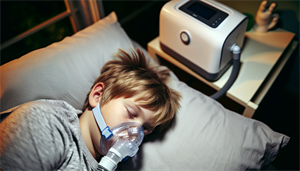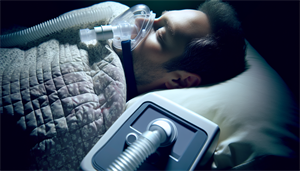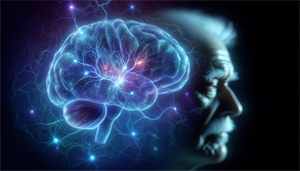Can sleep apnea cause bed wetting? It’s a pressing question for many. Sleep apnea does more than disrupt sleep; it can also impact bladder control, potentially leading to bed wetting in both children and adults.
This article provides a straightforward exploration of how sleep apnea is linked to nighttime accidents and what you might expect from treatment and management strategies.
Key Takeaways
-
Sleep apnea, particularly obstructive sleep apnea (OSA), is often associated with bed wetting (nocturnal enuresis) in both children and adults, with children suffering from OSA demonstrating a much higher prevalence of severe bed wetting.
-
Key treatments for sleep apnea-induced bed wetting in children include adenotonsillectomy to alleviate airway obstructions and Continuous Positive Airway Pressure (CPAP) therapy to maintain an open airway during sleep, while lifestyle modifications play an important role as well.
-
Adults may also experience bed wetting associated with sleep apnea and should seek medical advice if symptoms persist, as numerous factors like obesity, neurological disorders, and certain medications can contribute to this condition.
Understanding Sleep Apnea and Bed Wetting

Sleep apnea is a sleep disorder characterized by the temporary cessation of breathing multiple times during the night, often leading to oxygen deprivation and restless sleep. This condition may be linked to bed wetting, another one of the various sleep disorders, defined as the occurrence of bed-wetting during the night, typically in older children over the age of five. It is reported that up to 80 percent of children suffering from enuresis also have concurrent obstructive sleep apnea (OSA).
Assessing a child with bed wetting for sleep apnea, particularly OSA, is crucial since it represents a significant proportion of diseases in pediatric ENT outpatients. Parents whose children are experiencing bed wetting, particularly older children, should pay close attention to the potential presence of sleep apnea symptoms and consult their physician if concerns arise.
Types of Sleep Apnea
Sleep apnea primarily falls into two categories: obstructive sleep apnea (OSA) and central sleep apnea (CSA). OSA, also known as obstructive sleep apnea syndrome, is characterized by reduced airflow despite chest and abdomen movement as the body attempts to breathe against an obstruction, whereas CSA involves significantly reduced airflow and lack of chest and abdomen movement, indicating a central nervous system issue.
Symptoms of sleep disordered breathing, such as obstructive sleep apnea, encompass:
-
Snoring
-
Excessive daytime sleepiness
-
Headaches
-
Difficulty concentrating
-
Nocturnal urination
Early recognition of these symptoms can facilitate swift diagnosis and treatment, potentially easing the related bed wetting.
The Connection Between Sleep Apnea and Bed Wetting
The brain’s capacity to prioritize bladder control in the presence of oxygen deprivation can be compromised due to sleep apnea. This is the key reason why this sleep disorder can lead to bed wetting. Essentially, the neurological basis for the association between sleep apnea and bed wetting is a high arousal threshold, leading to reduced sensitivity to bladder filling or detrusor contraction, which in turn affects the urge to urinate.
Grasping this connection aids in pinpointing the underlying cause of bed wetting in both children and adults. Treatment of the underlying sleep apnea can subsequently aid in reducing bed wetting episodes.
How Sleep Apnea Affects Children's Bed Wetting

Bed wetting in children can be particularly distressing, and sleep apnea, particularly OSA, is a common cause. Notably, it is found that around 33% of children with OSA encounter bed wetting. Furthermore, children with nocturnal enuresis have a much higher prevalence of severe OSAHS at 28.9%, in contrast to 0.6% in children without enuresis.
Children who suffer from both sleep apnea and bed wetting are generally between the ages of 2 and 6 years old. Hence, parents and caregivers must be mindful of this correlation and seek medical guidance if they observe signs of sleep apnea in their bed-wetting child.
Obstructive Sleep Apnea in Children
OSA in children is often triggered by enlarged tonsils and adenoids, which cause airway obstruction. The primary treatment for severe OSA in children is adenotonsillectomy, a surgical procedure that involves the removal of the tonsils and potentially adenoids. This procedure can significantly alleviate bed wetting symptoms in children with OSA.
Risk factors linked to the development of OSA in children encompass high BMI, enlarged tonsil size, and the presence of sleep apnea symptoms. It has been observed that larger tonsils and adenoids are linked to higher apnea-hypopnea index (AHI) values, indicating a more severe OSA.
Treatment Options for Children
When it comes to the treatment of sleep apnea and bed wetting in children, there are several options. Adenotonsillectomy, which involves the surgical removal of the tonsils and potentially adenoids, can help alleviate the symptoms of enuresis in children with OSAHS by addressing the airway obstructions.
Another effective treatment option to treat sleep apnea is Continuous Positive Airway Pressure (CPAP) therapy. This therapy involves:
-
Providing a continuous flow of air through a mask
-
Maintaining an open airway during sleep
-
Alleviating upper airway blockage
-
Decreasing instances of waking after sleep onset or related oxygen desaturation in children with sleep apnea.
Lifestyle modifications, such as establishing a regular sleep schedule, ensuring a healthy diet, and engaging in activities that promote better sleep, also play a significant role in addressing sleep apnea and associated bed wetting.
Adult Bed Wetting and Its Association with Sleep Apnea

While often associated with children, bed wetting is a condition that can also affect adults, particularly those struggling with sleep apnea. In fact, around 7% of adults with sleep apnea have reported experiencing frequent nighttime urination, also known as bed wetting. It’s notable that sleep apnea can induce bed wetting in adults by affecting the brain’s ability to prioritize bladder control over oxygen flow.
The prevalence of enuresis in adults can vary significantly, contingent upon the clinical definition of enuresis and the specific population under study. Hence, it’s necessary for adults who experience bed wetting to consult a medical professional, as it could indicate an underlying health problem such as sleep apnea.
Risk Factors for Adult Bed Wetting
Several risk factors can contribute to adult bed wetting. One of the major factors is obesity, with research indicating a 60% to 100% higher probability of developing urinary incontinence for every 5-unit rise in BMI. The additional pressure exerted on the bladder and pelvic floor muscles by obesity can result in bed wetting. Other risk factors include:
-
Diabetes
-
Bladder or prostate problems
-
Neurological disorders
-
Medications
-
Alcohol or caffeine consumption
-
Stress or anxiety
If you are experiencing adult bed wetting, it is important to consult with a healthcare professional to determine the underlying cause and develop an appropriate treatment plan.
Alcohol consumption is another risk factor that can contribute to adult bed wetting. Alcohol can suppress the hormone antidiuretic hormone (ADH), which typically reduces urine production. Furthermore, it can irritate the bladder muscle, leading to involuntary nighttime urination.
Certain medications can also increase urine production or relax the bladder muscles, leading to involuntary urination or even frequent urination.
Prevalence of Bed Wetting in Adults with Sleep Apnea
Bed wetting is a prevalent issue among individuals with sleep apnea, with roughly 7% of individuals with this condition experiencing bed wetting. Research indicates that the frequency of bed wetting may rise as the severity of the condition increases.
CPAP therapy and lifestyle changes are commonly prescribed treatments for adult bed wetting associated with sleep apnea. By treating the underlying sleep apnea, these interventions can help reduce bed wetting episodes.
Managing Bed Wetting and Sleep Apnea
Managing bed wetting and sleep apnea involves a combination of medical treatments and lifestyle changes. CPAP therapy plays a role in treating the underlying obstructive sleep apnea (OSA), which is commonly linked to bed wetting. By maintaining uninterrupted airflow throughout the sleep cycle, it contributes to a reduction in bed wetting incidents, leading to improved sleep quality.
Along with medical treatments, lifestyle modifications such as weight loss, reduced alcohol consumption, and proper sleep hygiene can enhance sleep quality and diminish bed wetting. Hence, managing these conditions is not just about treatment but also about making healthy lifestyle choices.
Continuous Positive Airway Pressure (CPAP) Therapy

CPAP therapy is a widely used treatment for sleep apnea, and it can also effectively address bed wetting by ensuring uninterrupted airflow throughout the sleep cycle. This therapy involves administering pressurized air through a mask to the airway during sleep, thereby assisting the individual in breathing and sustaining an open airway.
While CPAP therapy is effective, it may not be suitable for everyone and should be utilized only under the supervision of a healthcare professional. The therapy can also be complemented with lifestyle changes for better results.
Lifestyle Changes to Improve Sleep Quality

Lifestyle changes can substantially improve sleep quality and reduce bed wetting. Decreased alcohol consumption can enhance the quality of sleep by mitigating the adverse effects of alcohol on sleep, including insomnia. Furthermore, it might reduce the incidence of bed wetting, as alcohol has the potential to irritate the bladder and lead to nocturnal enuresis.
Incorporating exercises like:
-
brisk walking
-
water aerobics
-
semi-hilly bike rides
-
swimming
-
biking
-
jogging
-
walking
-
yoga
-
Tai Chi
-
Pilates
-
progressive muscle relaxation (PMR)
Incorporating sleep medicine into your routine can also enhance the quality of sleep. Together, these lifestyle changes can help manage sleep apnea and bed wetting effectively.
When to Seek Professional Help
Determining the right time to seek professional help is essential in managing sleep apnea and bed wetting. Sleep apnea is one of the many medical conditions that have been discovered to coexist with nocturia, emphasizing the importance of seeking professional assistance for diagnosis and treatment. If an individual experiences nocturia over several consecutive days, it is imperative to inform their physician, as it could indicate underlying health conditions such as sleep apnea.
It is essential to seek professional assistance for bed wetting and sleep apnea when persistent symptoms are experienced, as a healthcare provider can provide treatment options such as moisture alarms and medication. Importantly, critical symptoms of sleep apnea that necessitate immediate medical attention encompass daytime fatigue, depression, anxiety, disruptions in brain function, sudden shortness of breath or chest pains at night, difficulty focusing, morning headaches, tossing and turning during sleep, and loud snoring accompanied by daytime sleepiness.
Signs It's Time to Consult a Doctor
Identifying the symptoms indicating the need to consult a doctor for sleep apnea and bed wetting is a crucial step towards obtaining the required assistance. Nocturia, also referred to as nocturnal urination, occurs when a person regularly experiences the urge to urinate at night. This condition is known medically as nocturia. If someone experiences frequent episodes of nocturia, it could be an indication of underlying health issues such as sleep apnea, and therefore, seeking medical advice is advisable.
Other indications of obstructive sleep apnea encompass:
-
Snoring
-
Daytime drowsiness
-
Cognitive challenges
-
Gasping for breath during sleep
-
Morning headaches
-
Mood alterations
-
Bed wetting related to sleep apnea
If you identify any of these symptoms, discussing them with a medical professional is crucial for a comprehensive assessment and accurate diagnosis.
Diagnostic Tests and Assessments
Accurate diagnosis of sleep apnea and bed wetting necessitates thorough diagnostic tests and assessments. These may encompass sleep studies, physical examinations, and evaluations of medical history. A sleep study for the diagnosis of sleep apnea may encompass a home sleep test, which is a simplified version that can be conducted at home with the required equipment.
A physical examination for diagnosing sleep apnea may involve observing the individual in the prone position and during sleep to visibly document any obstructions. Crucial details to consider during a medical history assessment for sleep apnea diagnosis include symptoms discussion, fluid intake, family medical history, bowel and bladder habits, issues related to bed-wetting, hydration record, daytime voiding pattern, toilet training history, frequency and timing of bed wetting episodes, and sleep history.
Summary
To summarize, sleep apnea and bed wetting share a complex relationship, with sleep apnea often being a contributing factor to bed wetting in both children and adults. Understanding the types of sleep apnea and their symptoms, risk factors, and the treatments available is the first step towards managing these conditions.
In conclusion, whether you or your loved ones are dealing with sleep apnea and bed wetting, remember that help is available. By seeking professional advice and adopting lifestyle changes, you can improve sleep quality, manage these conditions effectively, and lead a healthier, more fulfilling life.
Frequently Asked Questions
Why is bedwetting a symptom of sleep apnea?
Bedwetting can be a symptom of sleep apnea because the body's response to a narrowed airway can lead to the excretion of a hormone-like protein that triggers the elimination of sodium and water, causing bedwetting.
Can sleep apnea cause urinary incontinence?
Yes, sleep apnea can cause urinary incontinence, as it is associated with overactive bladder and urgency incontinence in men, which may have clinical implications for treatment.
Symptoms of sleep apnea?
If you're experiencing noisy sleep, restlessness, constant tiredness, and fit the profile, you could be showing symptoms of sleep apnea. Seeking medical advice is advisable.
What treatments are available for children with sleep apnea and bed wetting?
The available treatments for children with sleep apnea and bedwetting include adenotonsillectomy, CPAP therapy, and lifestyle changes. These can help improve their condition and quality of life.
Are adults also affected by bed wetting?
Yes, around 7% of adults with sleep apnea have reported experiencing frequent nighttime urination, also known as bed wetting. This is not uncommon in adults with certain medical conditions such as sleep apnea.


